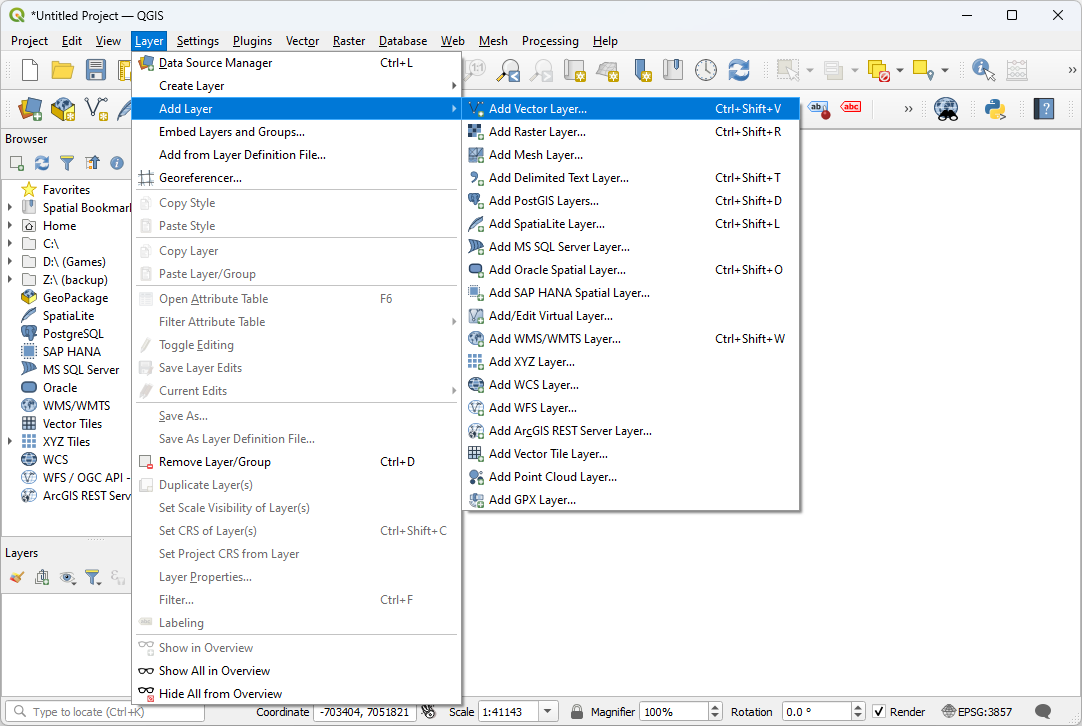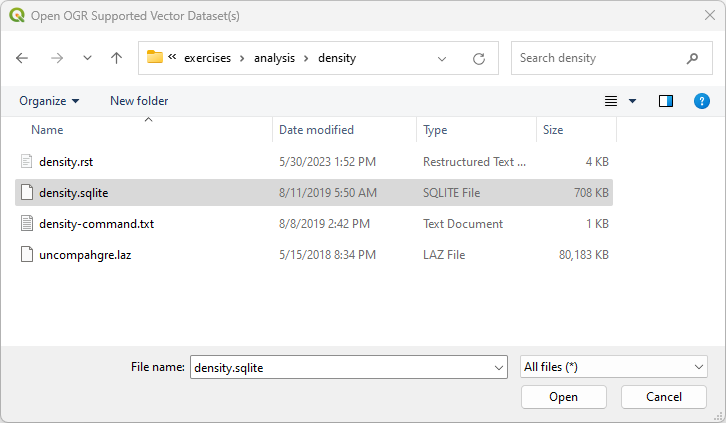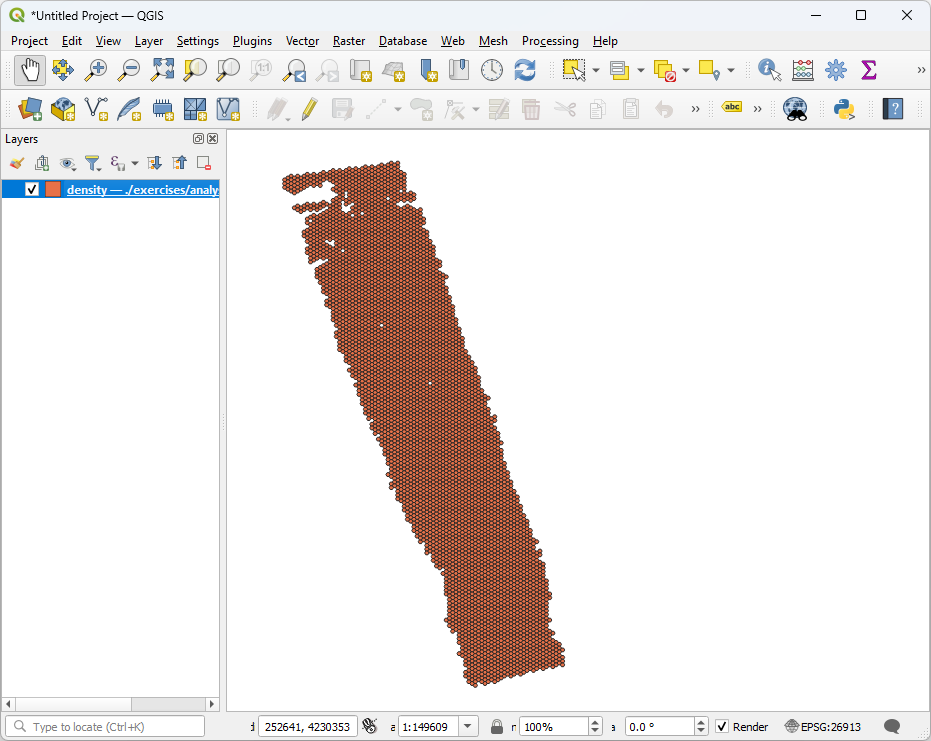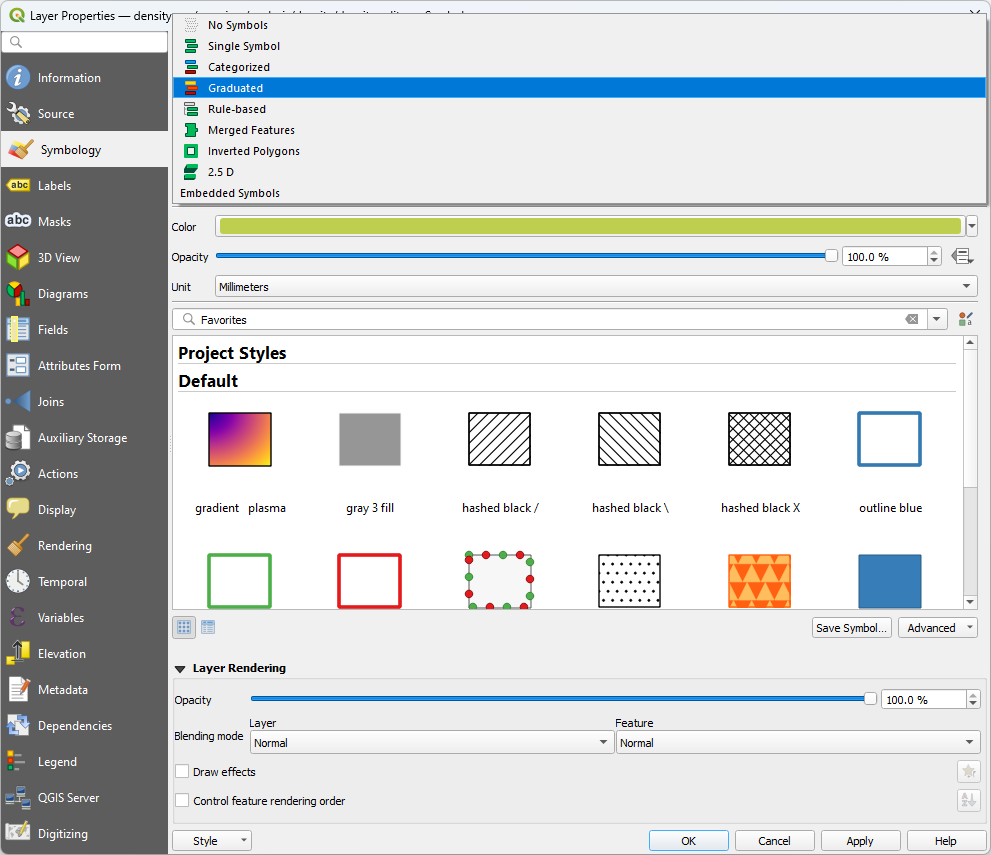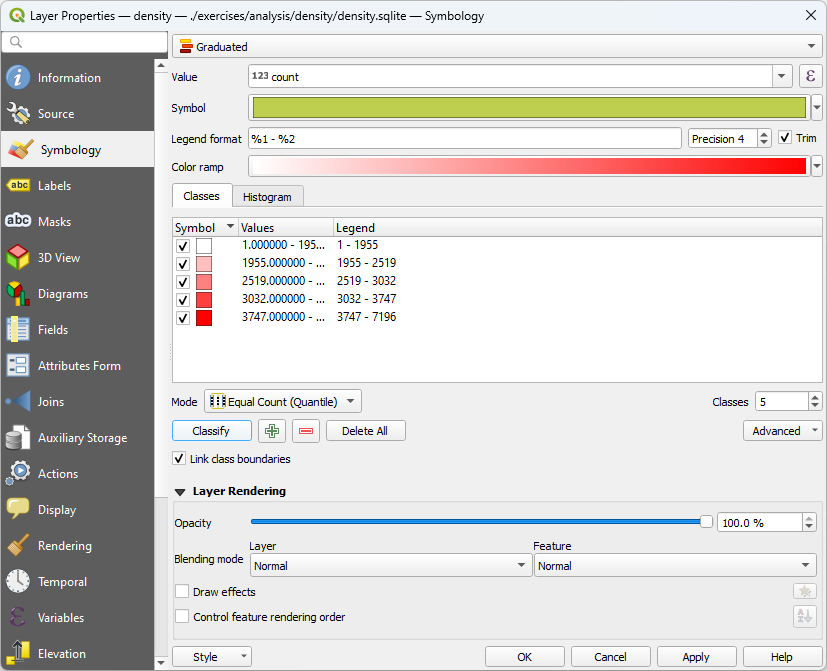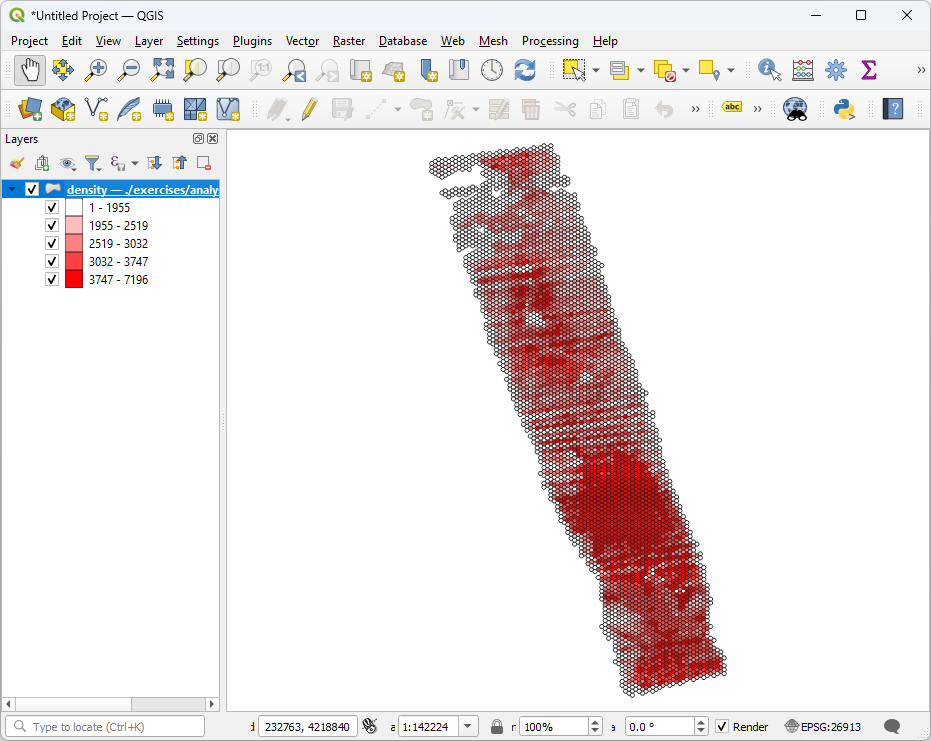Visualizing acquisition density
This exercise uses PDAL to generate a density surface. You can use this surface to summarize acquisition quality.
Exercise
PDAL provides an application to compute a vector field of hexagons computed with filters.hexbin. It is a kind of simple interpolation, which we will use for visualization in QGIS.
Command
Invoke the following command, substituting accordingly, in your Shell:
$ pdal density ./exercises/analysis/density/uncompahgre.laz \
-o ./exercises/analysis/density/density.sqlite \
-f SQLite
> pdal density ./exercises/analysis/density/uncompahgre.laz ^
-o ./exercises/analysis/density/density.sqlite ^
-f SQLite
Visualization
The command uses GDAL to output a SQLite file containing hexagon polygons. We will now use QGIS to visualize them.
Add a vector layer
Navigate to the output directory
Add the
density.sqlitefile to the viewRight click on the
density.sqlitelayer in the Layers panel and then chooseProperties.Within the
Symbologytab, changeSingle SymboltoGraduatedin the drop downChoose the
Countcolumn to visualizeChoose the
Classifybutton to add intervalsAdjust the visualization as desired
Notes
You can control how the density hexagon surface is created by using the options in filters.hexbin.
The following settings will use a hexagon edge size of 24 units.
--filters.hexbin.edge_size=24
